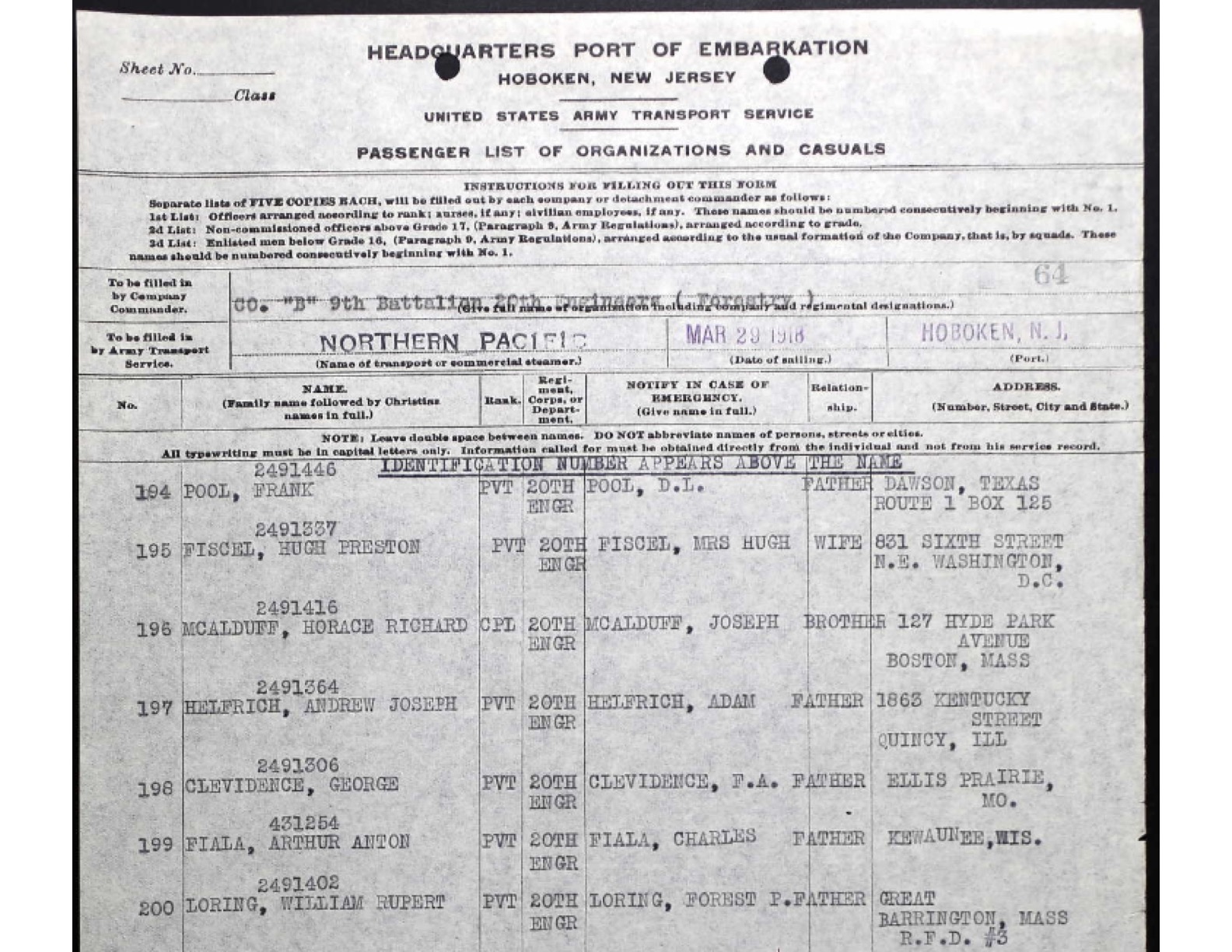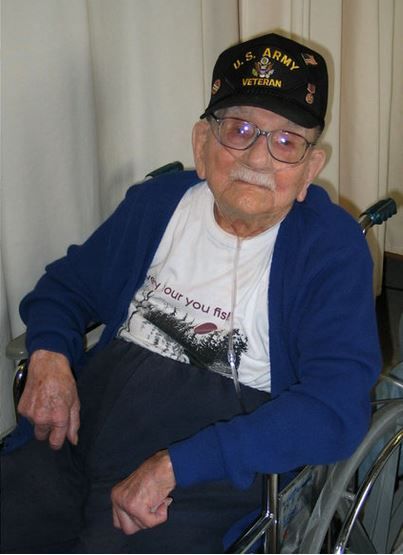


9th Battalion, 20th Engineers
The Ninth Battalion
Note: Most of the text of this article comes from "TWENTIETH ENGINEERS -- FRANCE -- 1917-1918-1919"
The Ninth was the latest of the original Battalions of the Twentieth to form, its primary organization occurring in February 1918. Both the Seventh and Eighth departed from Camp American University during the latter part of February, leaving the Ninth and Tenth, and the three auxiliary Road and Bridge Battalions, to divide the recruits, then arriving steadily in large contingents from all parts of the nation.

Company B, 9th Battalion, 20th Engineers at Camp American University
The Ninth reached authorized strength early in March, and was rapidly equipped and trained. Earlier difficulties in obtaining troop and engineering supplies had been largely overcome, and the Battalion reported ready with a minimum delay. After the customary inspection the outfit entrained for "An Atlantic Port," March 27th, and sailed two days later aboard the crack transport "Northern Pacific." Despite the increased submarine activity, the voyage was unmarred, and the convoy reached Brest April 8th.

Passenger listing for the 9th Battalion on the Northern Pacific
Upon arrival the Ninth Battalion was scheduled for duty in the Jura Mountain region of eastern France, and proceeded to report for assignments to the Besancon Forestry District, the administration of the Second Battalion, Tenth Engineers. Upon the advent of the Ninth, a new district was created, with headquarters at La Cluse, later removed to Bourg, the capital of the Department of Ain, in the valley of the Saone. The region abounded in dense stands of softwoods, chiefly fir, and its exploitation marked the widening of American Forestry toward the largest territory in France as yet untapped.

Loggers from the 9th Battalion
Like nearly all the Battalions, the Ninth was due for its share of separations. Co. A, later the 25th Co., was detached from the organization and sent to the Epinal District, where they became one of the many units of the extensive force operating within range of enemy raids in the Nancy sector.

Miscellaneous images from the 9th Battalion




Companies B and C, later styled the 26th and 27th, remained with the Bourg District, constructing and operating mills at Mouthe, in the Doubs, and Murat, Cantal, and Developing camps at Oyonnax, and Brenod, Ain. The mill at Mouthe was of 20,000 capacity, and during its run piled up some enviable records. The Murat mill was rated 10,000.

Sections of forest cut in the vicinity of Albepierre
In June the district was reinforced by the addition of the 49th Co. (D of the 43 Engineers) who took over the operation at Muray, the 26th concentrating at Brenod. Murat was so far distant from Bourg - upwards of 150 miles - that administration presented increasing difficulties, and the situation was met by creating another new district, with the headquarters organization of the Fourteenth Battalion (43rd Engineers), in control. The new offices were established at Le Puy.
After the Armistice all of the companies of the Ninth were included in the list destined for Burnt Area service. Headquarters was not included in the orders, their organization being transferred to Besancon, replacing the Tenth Engineers, Twelfth Battalion, who started for home by right of seniority. The operations of the Bourg district were included in the Besancon field, and Ninth Headquarters undertook to close out a total of fourteen camps—nine of Besancon and five of Bourg.

The camp of Company A, 9th Battalion (25th Company) in the Vosges
January 15th, the 26th and 27th started on the long trail to the Landes. The change of scene was complete. From the snow clad foothills of the Jura Alps to the swampy sedges of Gascony, a three day journey through mountains, upland and valley— and at the end, a dismal prospect of weary months, toiling in bottomless mud. The 25th rejoined their comrades on the job, and for nearly four months, while the bright minds of the world wrangled problems of reconstruction, the Burnt Area crew settled one specific problem beyond danger of resurrection.

Private Leon Frost, 26th Company, Died in France 31 May 1918
The job finally reached conclusion early in May, and the units started homeward, sailing from Bassens for Hoboken and Camp Merritt and Home, aboard the K. I. Luckenbach, May 16th, 1919.
Company D of the old 43rd Engineers, the 49th and fag-end end company of the Twentieth, reported to the La Cluse - Bourg District, Ninth Battalion, and were given charge of the Murat operation, in the upper valley of the river Allier, in south central France. Here they operated a McDonough sawmill of 10,000 rated capacity. The region was rich in timber resources, and its importance led to the establishment of a new Forestry district at LePuy, sixty miles to the east, with Fourteenth Battalion Headquarters in control. At the cessation of hostilities several new can in progress of development in the neighborhood.
Upon release from the Le Puy District the 49th Co.was sent to join the assembled Forest troops in the Landes, and spent the spring in road repair details around Pontenx and Labouheyre. After the Fourth Battalion left for home, early in May, the 49th took over the job of liquidating the American mills in the Dax district , as well as at Pontenx, Mimizan and the Burnt Area. Sale of the bulk of equipment remaining to French railway interests closed the need for garrison functions, and the scattered details started for the States, leaving only a forlorn rearguard and warped and silent shanties, to recall to the Landais the boom days of '17 - '19.

Private Arthur Anton Fiala
Company B, 9th Battalion, 20th Engineers
The last surviving soldier from the 20th Engineers of WW1
1899 - 2005